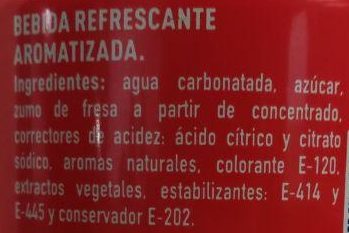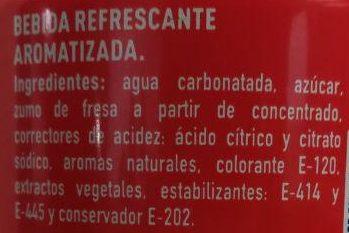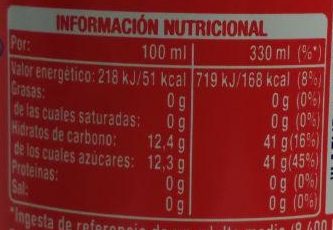Fresa - Fanta - 330 ml
This product page is not complete. You can help to complete it by editing it and adding more data from the photos we have, or by taking more photos using the app for Android or iPhone/iPad. Thank you!
×
Barra-kodea: 5449000061164 (EAN / EAN-13)
Izen arrunta: Bebida refrescante aromatizada sabor Fresa
Kopurua: 330 ml
Ontziratzea: en:Metal, en:Recyclable Metals, 41 ALU, en:Can
Markak: Fanta
Kategoriak: en:Plant-based foods and beverages, en:Beverages, en:Plant-based beverages, en:Carbonated drinks, en:Fruit-based beverages, en:Sodas, en:Fruit sodas
Saltzen diren herrialdeak: Espainia
Matching with your preferences
Ingurumena
Ontziratzea
Transportation
Report a problem
Datuen iturria
Product added on by openfoodfacts-contributors
Last edit of product page on by packbot.
Produktuaren orria -gatik editatua jog13ovd, jujuyeh, kiliweb, thaialagata, yuka.WGZzaklxc0V1dGdqcC9GZ293S0k1OEp4d2NLYlgwbW5BYmM4SUE9PQ.










